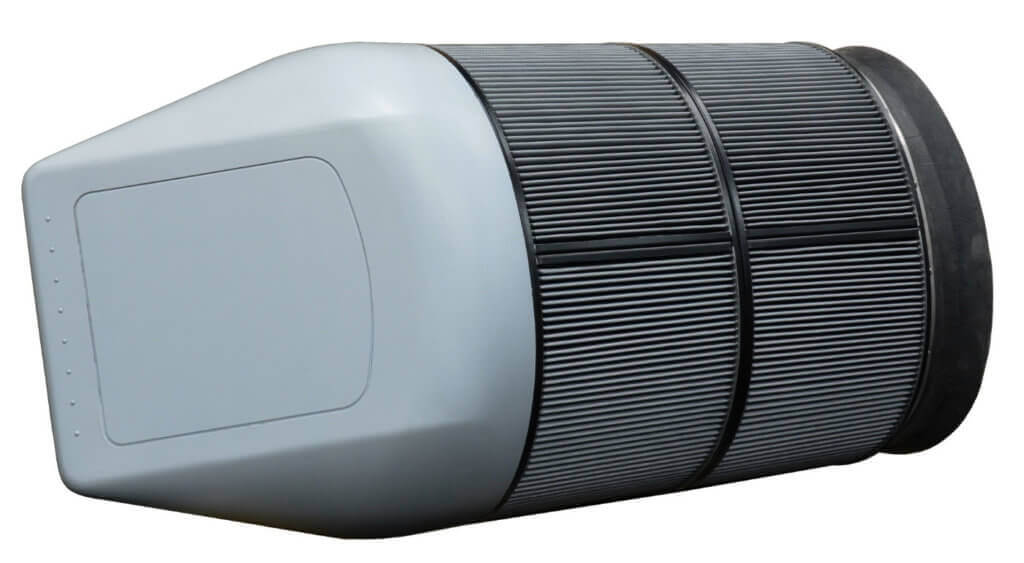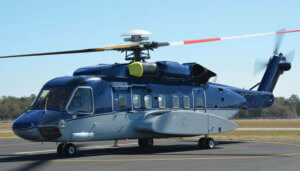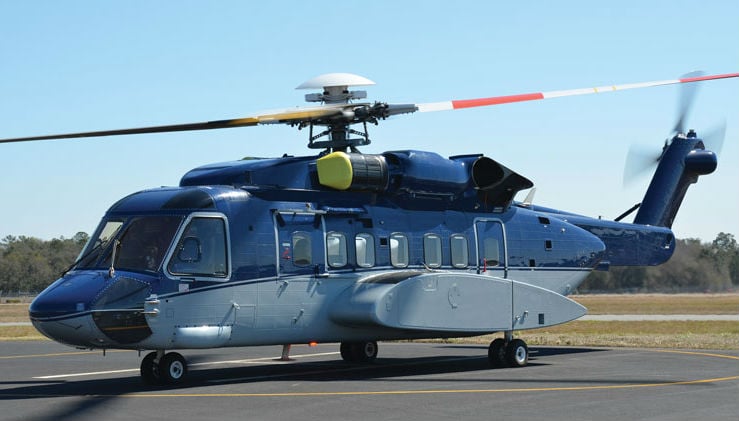For the last five years, the California-based parts manufacturer Aerometals has been showing HAI Heli-Expo attendees its inlet barrier filter (IBF) for the Sikorsky S-92 — but without a supplemental type certificate (STC) for the filter, has been unable to offer it to customers.

Now, the company has finally announced Federal Aviation Administration (FAA) approval for the filter, following an epic certification struggle that has had far-reaching implications for the entire IBF industry.
“It was a lot of back and forth . . . but we were able to work through some of the issues we were having,” said Aerometals executive director Lorie Symon.
Symon also expressed optimism that the FAA and industry are finally on their way to establishing clear, practical standards for IBF certification that will prevent these types of battles in the future.
“It will take a while,” she said, “but I do think we’ll come out of it with a standard that both the FAA and industry can live with.”
Aerometals submitted its initial STC application for the S-92 filter to the FAA in March 2012. Although Aerometals and FDC/aerofilter — which Aerometals acquired in 2010 — had successfully certified other IBF models in the past, the FAA released an “issue paper” against the S-92 project, stipulating more than 90 new requirements.
The issue paper reflected a new approach toward certifying IBFs that the FAA elaborated upon in a draft policy statement, which was released shortly before Heli-Expo 2016.
Typically, helicopter operators who have installed IBFs on their aircraft perform periodic power assurance checks using the aircraft’s original performance charts, taking advantage of the fact that most fielded turbine helicopter engines have a significant performance margin above minimum specification power.
In its draft policy statement, however, the FAA declared that such power assurance checks were unacceptable. Instead, the FAA sought to require IBF manufacturers to perform specialized flight testing and develop new charts reflecting reduced performance data.
However, obtaining the necessary performance data can be cost-prohibitive without the cooperation of airframe and engine original equipment manufacturers (OEMs) — who aren’t always eager to share their proprietary data. That led the aftermarket IBF makers Aerometals and Donaldson to express concern that the FAA’s policy interpretation could drive them out of business, depriving helicopter operators of effective, affordable engine protection.
At a public hearing on the subject in July 2016, Bell Helicopter and Sikorsky joined Aerometals and Donaldson in testifying in support of IBFs, as did several operators who use IBFs. In January of this year, the engineering association SAE International announced that it had been tasked by the FAA to develop two new aerospace recommended practice standards dealing with rotorcraft IBFs.
Vertical spoke with Symon on Feb. 16, the day after SAE International’s initial, virtual meeting with industry.
“We’re getting great participation on the committee, and I do think we’ll be able to hammer through these issues,” she said.
In the meantime, Symon said that Aerometals benefitted from Sikorsky’s support in attaining certification of the S-92 IBF. For this project, Aerometals employed computational fluid dynamics modeling software — which employs high-speed computer modeling for turbulence mitigation, shape design, and optimization of the overall filter performance and protection characteristics — in addition to conducting more than 100 hours of flight testing at its own expense.

“These aircraft are revenue-producing,” Symon noted. “To take [an S-92] out of service so we could do flight testing, no one offered to do that for us.”
Symon said that Aerometals is seeing strong interest in the S-92 IBF from operators in the Middle East and North Africa, including expeditionary operators supporting the U.S. government. Offshore operators have also expressed interest in the filter, which Symon said has been demonstrated to capture over 90 percent of airborne salt nuclei.
“We feel the IBF, on top of everything else it does . . . is going to have a huge benefit for the offshore operators because of the reduction of salt nuclei,” she said.
Business is looking up for Aerometals in general these days. The company continues to grow its parts manufacturer approval (PMA) programs, and at Heli-Expo 2017 is also showing off its new oil cooler impeller, which is eligible for installation on MD Helicopters 369D/E/FF/500N models, and all variants of the Airbus Helicopters BK117. (The component is made from a single piece of metal, rather than the 21 brazed pieces in the original part.) Aerometals is also growing its composites capabilities, and expanding its manufacturing facility to keep up with increased production.
“We’re bursting at the seams,” Symon said. “We’re doubling our square footage and really looking forward to that.”
However, Symon said that until the FAA has agreed to clear certification standards, Aerometals will only be pursuing IBF projects for which it has strong OEM support. According to SAE International, this process could take another 18 to 24 months.
“We are going to keep working projects while that’s going on, but we’re going to be very choosy,” Symon said.









